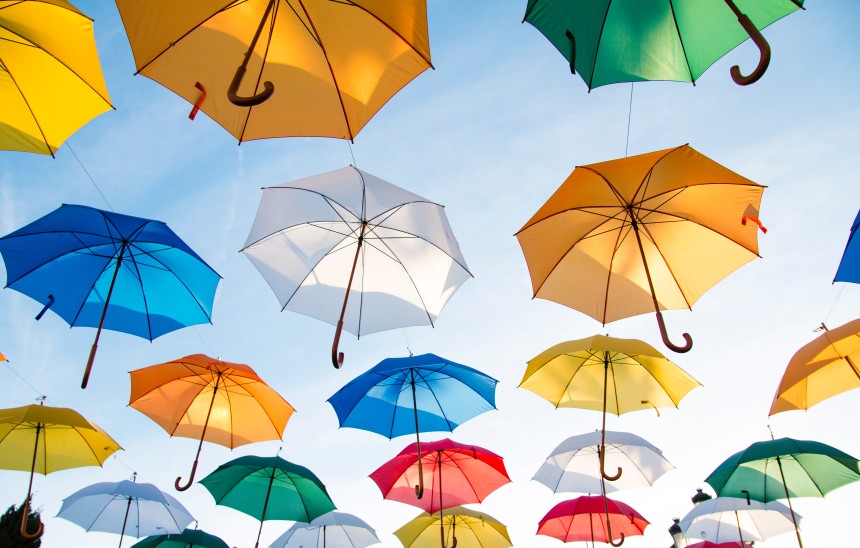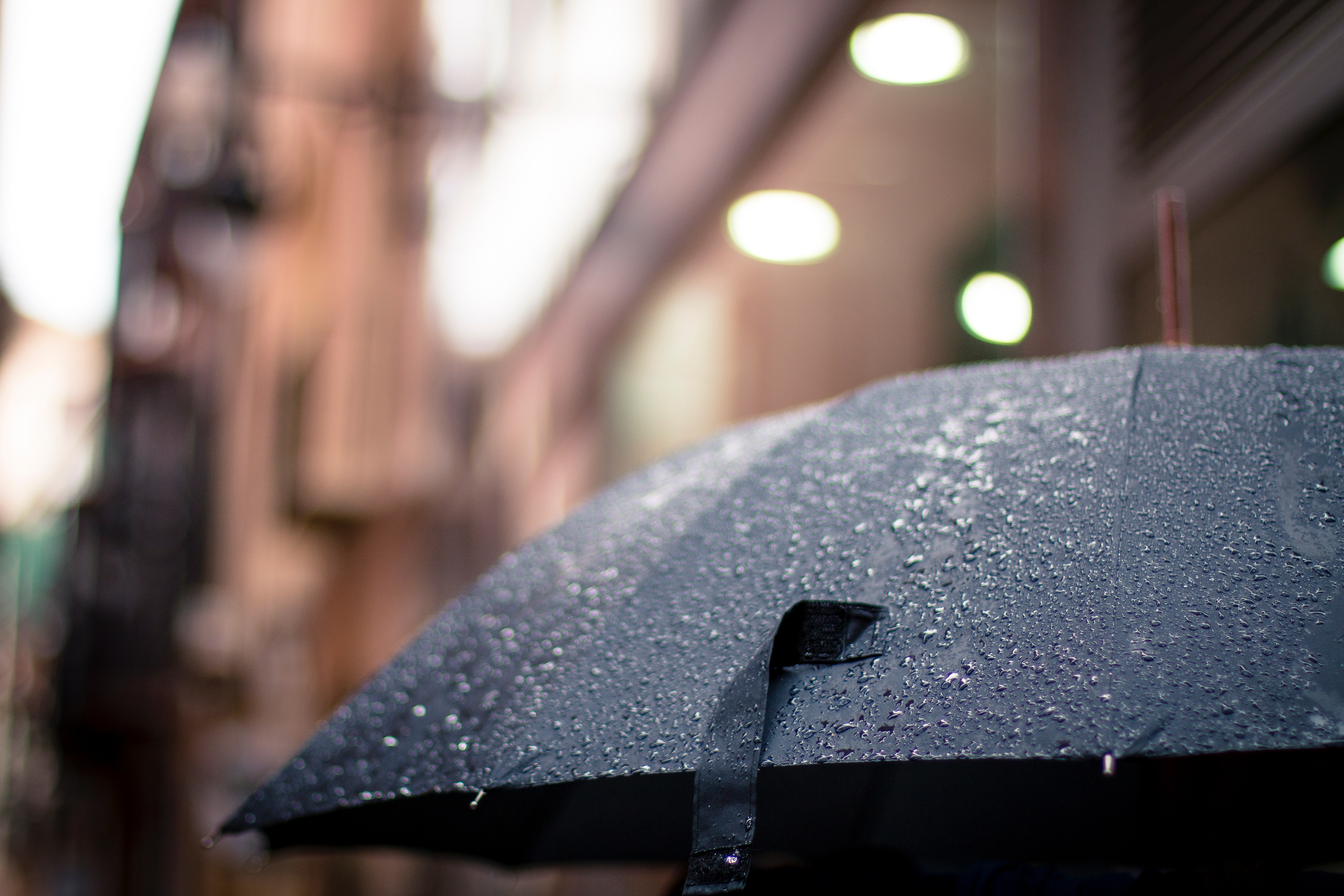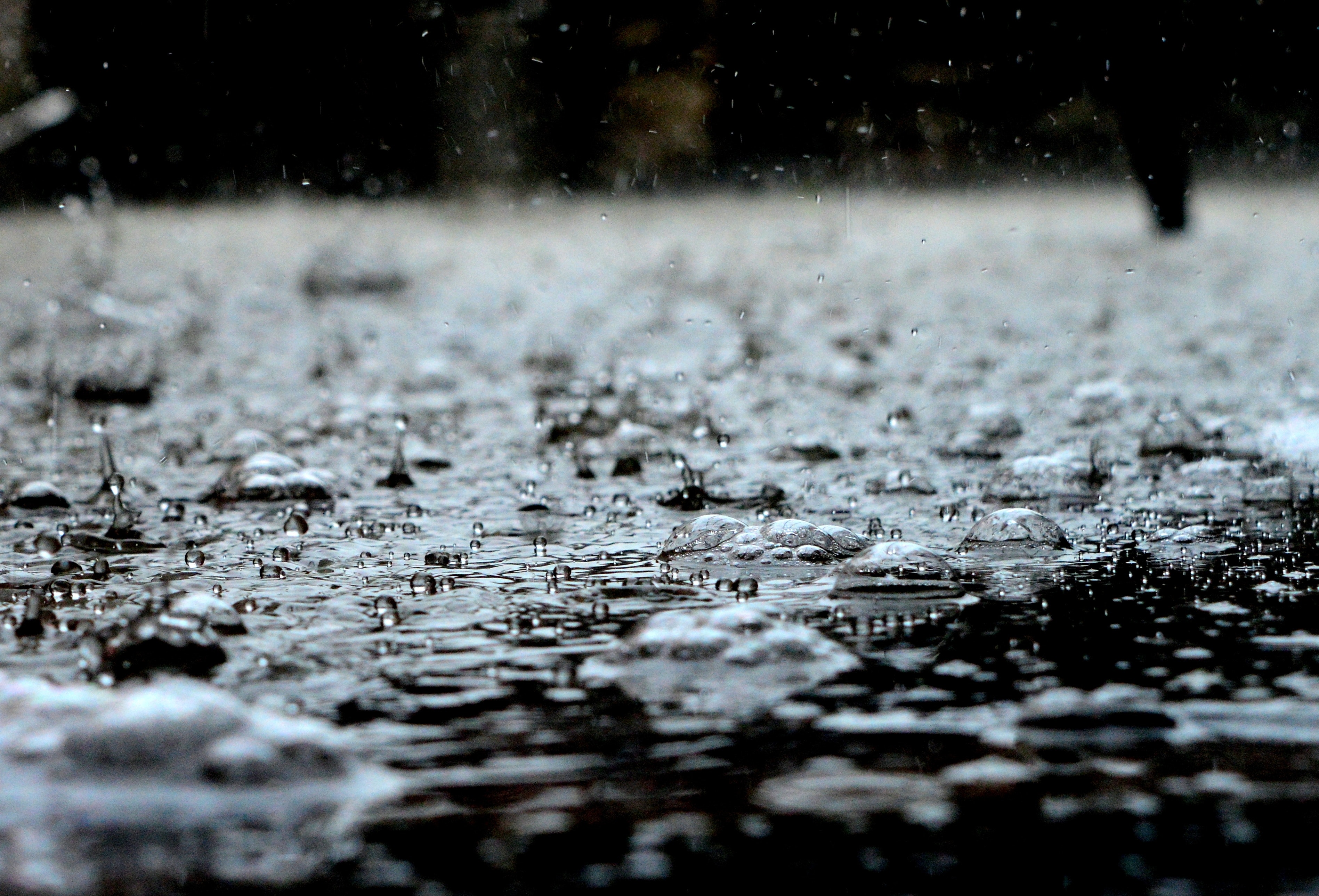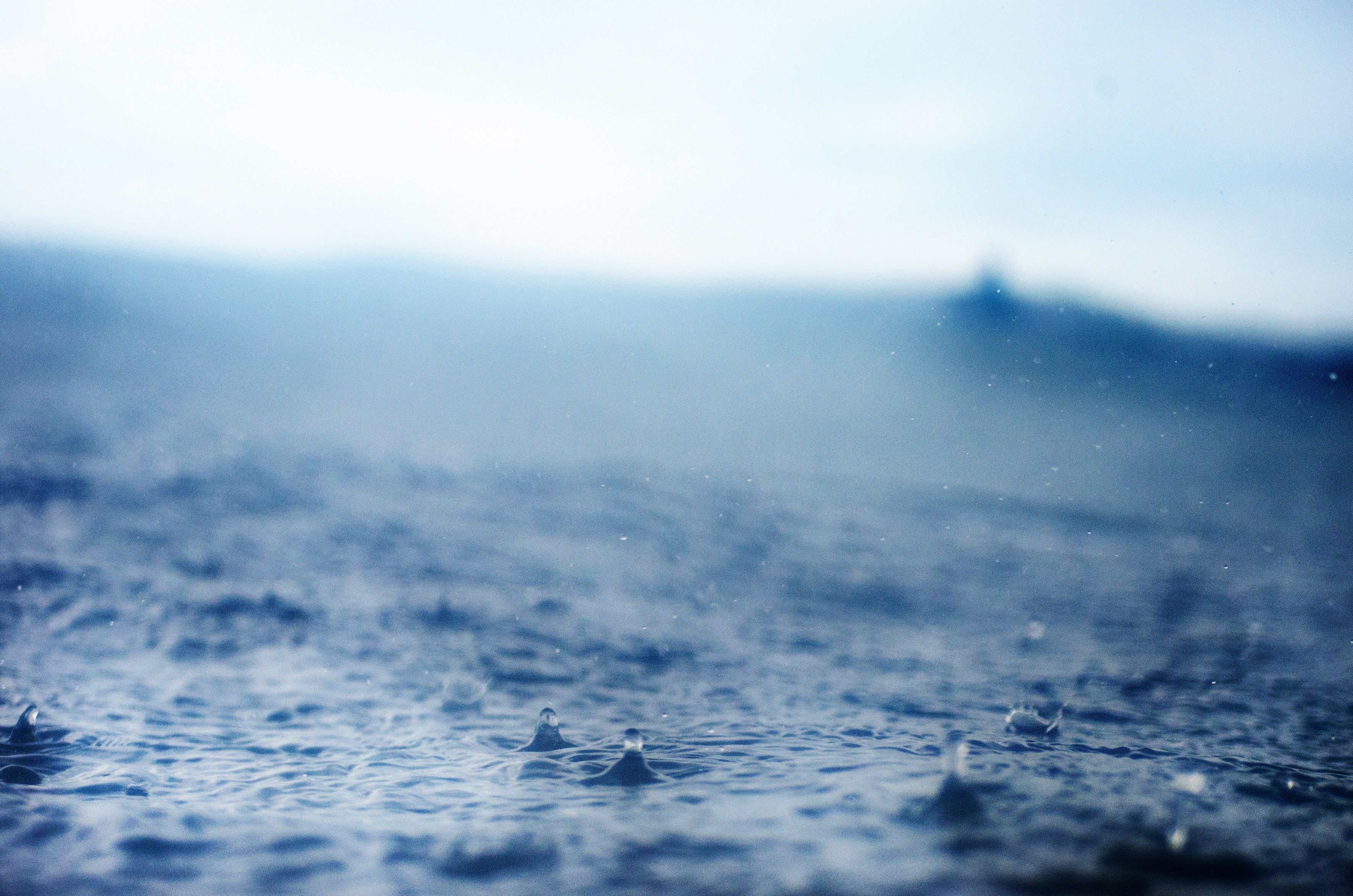Gauging in the rain

Measuring how much water falls from the sky is more complicated than it seems. To improve measurements, researchers are looking at umbrellas, hydrophones, and gamma ray detectors.
How much did we get today?
It seems like a simple question to answer after a rainy day or a rainstorm.
Putting a bucket or other container out to measure the amount of rainfall is a gauging method that may be as old as agriculture itself and, at least in India, was known at least 2 millennia ago: “The quantity of rain that falls in the country of Jángala is 16 dronas; half as much more in moist countries,” it says in the Arthashastra, a Sanskrit treatise on politics, economics, and military strategy. The text goes on to instruct, “According as the rainfall is more or less, the superintendent shall sow the seeds which require either more or less water.”
In today’s measurements, a drona represents about 50 millimeters of precipitation, according to a history of rain gauges by Ian Strangeways found in the journal Weather. But did those ancient instruments, to be positioned “in front of the storehouse” according to the Arthashastra, always record the right amount of dronas? Great care has to be taken lest gauges of that type are fooled by water splashing in or out or by wind preventing rain from falling nicely and vertically into a round opening.
At the annual General Assembly of the European Geosciences Union in Vienna, Austria, in April, three methods were discussed to improve or extend the measurement of rainfall. They nicely complemented one another: One would work best in an urban environment, one would work in an agricultural setting, and one would work out at sea.
Gauging umbrellas
In urban areas, measuring rainfall is a pain, said Marie-Claire ten Veldhuis, a hydrometeorologist at Delft University of Technology (TU Delft) in the Netherlands. “All the rain gauges we use now are way outside towns, because they have to be far from buildings. There are no good places for rain gauges in cities.”
That doesn’t mean there are no rain gauges there: lots of people like to install their own weather stations in their yard or on their roof. And these could be useful.
“But you need a great many of them to establish the pattern of rainfall in the city,” ten Veldhuis said.
 Information from rain gauges would be very valuable for city authorities, for instance, to anticipate or possibly prevent flooding.
Information from rain gauges would be very valuable for city authorities, for instance, to anticipate or possibly prevent flooding.
To help gather this information, ten Veldhuis’s group in the Water Management Department at TU Delft is developing portable rain gauges of a kind most people presumably wouldn’t mind carrying around for science—umbrella-mounted ones. A prototype shown in Vienna sports a piezoelectric sensor on its top. The umbrella would report its data and GPS-calculated position to a central server, so that city authorities would know how much rain is really falling at any given moment at many locations.
For the first feasibility study, the umbrella was installed in an open area, with a traditional rain gauge nearby, to see if counting rain droplets impacting the sensor would lead to a correct estimate of the amount of precipitation. As an alternative to drop counting, the circuitry also detected the general sound level generated by the rain.
In the first trial, both techniques worked, although both had issues. During counting, small drops would go undetected. With the sound measurement, wind noise could be a problem.
All in all, the measurements were most reliable when drops were counted in heavier rain. That makes the method already suitable for cities with a tropical climate, ten Veldhuis noted. “In many of those countries, alternatives like high-resolution radar aren’t available yet.” Her group is working with a number of cities in Africa, such as Dar es Salaam in Tanzania, Kumasi and Accra in Ghana, and Narok in Kenya, to develop “sensor-based weather services,” she said. “These umbrellas could be very useful there.”
The Delft group is working with NASA to turn the rain-gauging umbrellas into a citizen science project.
Radioactive rain
Even those who would gladly carry an umbrella for science might recoil at being asked to help measure radioactivity after a rainstorm. The experiment isn’t as dangerous as it might sound.
Every bout of precipitation brings a tiny uptick in gamma radiation from the ground, and that fact can be exploited for gauging purposes, said Marica Baldoncini, a physicist at the University of Ferrara and the National Institute of Nuclear Physics in Italy.
The gamma radiation boost results from the transport of a series of radioactive elements first up and then down. The process starts with uranium and thorium deep in the earth. In a sequence of radioactive decay steps, a number of other unstable elements are produced, among which is radium, which produces radon, which as a gas escapes into the atmosphere. There it decays into unstable isotopes of lead and bismuth. It’s these isotopes that enter into the hydrologic cycle.
 “Radon is chemically inert,” Baldoncini explained, “but when it decays, the daughter products are typically produced in a positively charged state and for that reason have high chemical reactivity. They attach to aerosols.”
“Radon is chemically inert,” Baldoncini explained, “but when it decays, the daughter products are typically produced in a positively charged state and for that reason have high chemical reactivity. They attach to aerosols.”
Within clouds, these aerosols are “scavenged” by water drops circulating in them and are eventually brought to the ground when the drops fall as rain. There, the decay of the lead and bismuth produces the gamma radiation that Baldoncini has been measuring.
“You see a sharp increase in the count rate, and the height of that peak is essentially proportional to the amount of water that is going to the ground,” she said.
Baldoncini’s goal is to turn this phenomenon into an alternative way to gauge rainfall, one that would work particularly well in rural areas, in combination with satellite measurements. From satellites, falling rain itself is not detected, but the water content of soil is. Indirectly, these data can deliver an accurate estimate of rainfall, except when other sources of moisture are active, such as irrigation. A ground-based rain gauge that records spikes of gamma radiation above the natural background could fill that gap and would also need less human intervention than a conventional gauge.
At the Vienna meeting, Baldoncini reported measurements of a dozen rainfall events with both conventional rain gauges and sodium iodide scintillators that detect gamma radiation. This comparison allowed her to develop an algorithm to connect both measurements.
In Baldoncini’s experiments, the hydrology of the location, an agricultural field near Budrio in the north of Italy, was exactly known. “There were people taking care of all that information, such as the amount of water added, the frequency, when the plants were sown. Typically, you don’t know this, because people don’t maintain a database about the irrigation frequency.”
Once the algorithm is fully developed, the gamma ray gauge could both improve local precipitation information and make satellite data more useful. “We plan to merge all the information from this proximal remote sensing that works at the scale of half a hectare with satellite measurements. And then [we] can tell in the satellite data: this is irrigation, and this is precipitation.”
Drops and bubbles
If, eventually, cities are covered by umbrellas and the countryside is covered by gamma ray detectors, that leaves the world’s oceans as an underserved area for rain gauges.
Conventional gauges are used on islands, of course, and it is possible to mount them on buoys. But in the latter case, they are easily damaged by waves and are even sometimes stolen by the crews of passing ships, said Dimitrios Galanis, an undergraduate student at the School of Civil Engineering of the National Technical University of Athens, Greece.
Instead, meteorologists would like to develop rain gauges for use underwater. These instruments would be essentially hydrophones, anchored to the seafloor. They would record both the noise that raindrops make as they strike the water surface and also the noise that emanates from the air bubbles that the raindrops create. These bubbles resonate at specific frequencies depending on their size.
Although the idea is straightforward, making the connection between noise and rainfall rate turns out to be difficult, Galanis said. And the work he presented at the Vienna meeting hasn’t cracked the problem just yet.
 Galanis analyzed published data from measurements in the Gulf of Mexico from both sound and conventional rain gauges, extracting two statistical characteristics from them, the power spectrum and the climacogram, to see which one would correlate best with the actual rainfall rate.
Galanis analyzed published data from measurements in the Gulf of Mexico from both sound and conventional rain gauges, extracting two statistical characteristics from them, the power spectrum and the climacogram, to see which one would correlate best with the actual rainfall rate.
The power spectrum is a widely used measure and can be visualized as a plot of the relative strength of different frequencies in the sound. The climacogram is less common and plots whether sound is more constant or variable as it is averaged over shorter or longer timescales.
So far, the climacogram seems to work best.
“But it is still very preliminary,” Galanis cautioned.
Rain gauging may have progressed a great deal since precipitation was measured in dronas, but so far it hasn’t quite gotten its sea legs.
Citation: den Hond, B. (2019), Gauging in the rain, Eos, 100, https://doi.org/10.1029/2019EO122617.
Originally published by eos.org, 30 May 2019.
